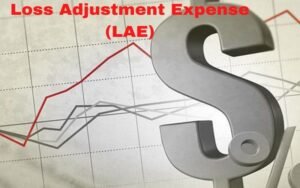What Was Bear Stearns?
Bear Stearns was a global investment bank located in New York City that collapsed during the 2008 financial crisis. The bank was heavily exposed to mortgage-backed securities that turned into toxic assets when the underlying loans began to default. Bear Stears was ultimately sold to JPMorgan Chase at a fraction of its pre-crisis value.
Understanding Bear Stearns
The Bear Stearns Company was founded in 1923 and survived the Stock Market Crash of 1929, becoming a global investment bank with branches around the world. Competent management and risk-taking saw Bear Stearns continue to grow with the global economy.1 It was one of the many firms to embrace Lewis Ranieri’s securitization of debt to create new financial products.3
By the early 2000s, Bear Stearns was among the world’s largest investment banks and a highly respected member of Wall Street’s pantheon of investment banks. Despite surviving and then thriving after the Great Depression, Bear Stearns was a player in the mortgage meltdown and the Great Recession that followed.
Bear Stearns operated a wide range of financial services. Inside this mix were hedge funds that used enhanced leverage to profit from collateralized debt obligations (CDOs) and other securitized debt markets. In April 2007, the bottom fell out of the housing market, and the investment bank quickly realized that the risk of these hedge fund strategies was much more significant than initially believed.
The housing market’s collapse caught the whole financial system by surprise, as much of the system was based on a solid housing market underpinning a solid derivatives market. The Bear Stearns funds used techniques further to jack up the leverage of these supposed market fundamentals, only to find out that the downside risk of the instruments they were dealing with wasn’t limited in this extreme case of market collapse.
The Bear Stearns Hedge Fund Collapse
The hedge funds using these strategies posted massive losses that required them to be bailed out internally, costing the company several billion upfront and then additional billion-dollar losses in writedowns throughout the year. This was bad news for Bear Stearns, but the company had a market cap of $20 billion, so the losses were considered unfortunate but manageable.
This turmoil saw the first quarterly loss in 80 years for Bear Stearns.6 Quickly, the rating firms piled on and continued to downgrade Bear Stearns’ mortgage-backed securities and other holdings. This left the firm with illiquid assets in a down market. The company ran out of funds and, in March 2008, went to the Federal Reserve for a credit guarantee through the Term Securities Lending Facility. Another downgrade hit the firm and a bank run started. By March 13, Bear Stearns was broke. Its stock plummeted.
JPMorgan Chase Buys Bear Stearns’ Assets
With insufficient liquidity to open its doors, Bear Stearns approached the Federal Reserve Bank of New York for a cash loan of $25 billion. When that was denied, JPMorgan Chase agreed to buy Bear Stearns for $2 a share, with the Federal Reserve guaranteeing $30 billion in mortgage-backed securities. The final price was ultimately raised to $10 a share, still a sharp drop for a company that had traded at $170 a year earlier.
Jamie Dimon, the CEO of JPMorgan Chase, would later regret the decision, saying it cost the company several billion to close out the failing trades and settle litigation against Bear Stearns. “Under normal conditions, the price we ultimately paid for Bear Stearns would have been considered low,” he wrote in his 2008 letter to shareholders. The reason Bear Stearns was sold off so cheaply is that, at the time, no one knew which banks held toxic assets or how big of a hole these seemingly innocuous synthetic products could knock in a balance sheet. “We were not buying a house—we were buying a house on fire.”
JPMorgan would go on to acquire another investment bank, Washington Mutual, shortly after. The two acquisitions would ultimately cost a combined $19 billion in fines and settlements.
Lehman Brothers Collapse
The illiquidity that Bear Stearns faced due to its exposure to securitized debt exposed troubles at other investment banks. Many of the biggest banks were heavily exposed to this sort of investment, including Lehman Brothers, a major lender of subprime mortgages.
By 2007, Lehman Brothers held $111 billion in real-estate assets and securities, more than four times its shareholder equity.11 It was also heavily leveraged, meaning that a relatively minor downturn could wipe out the value of its portfolio.
For most of 2008, Lehman Brothers attempted to unwind its positions by selling stock and decreasing leverage; however, investor confidence continued to bleed out. After a failed takeover by Barclays and Bank of America, Lehman Brothers declared bankruptcy.12
What Happened to Bear Stearns’s Investors After the Collapse?
As part of the stock-swap deal with JPMorgan, Bear Stearns investors received about $10 of JPMorgan stock in exchange for every share they owned from Bear Stearns. This was a sharp discount from the final share price of $30.2. Had those investors kept those shares, they would have recouped their losses 11 years later, according to the Wall Street Journal.
What Role Did Deregulation Play in the Bear Stearns’ Collapse?
Some economists have attributed the subprime mortgage crisis to financial deregulation, particularly the 1999 repeal of parts of the Glass-Steagall Act. This repeal removed the legal barriers between commercial and investment banking, allowing banks like Bear Stearns to issue and underwrite securities. These securities would ultimately become a significant catalyst for the financial collapse.14
Who Benefited From the Bear Stearns Collapse?
While there are no clear winners from the Bear Stearns collapse, stockholders would have suffered arguably more significant losses had the bank gone bankrupt. JPMorgan Chase, which acquired Bear Stearns at fire-sale prices, would also benefit, although it would be some time before JPMorgan would break even.13
Who Went to Jail for the 2008 Financial Crisis?
Although the 2008 financial crisis caused a public outcry, there was no reckoning for the blamed bankers. Two managers at Bear Stearns hedge funds were arrested for misleading investors but found not guilty.15 The only successful prosecution was Kareem Serageldin, a Credit Suisse executive convicted of mismarking bond prices to hide the bank’s losses.
Formerly one of the largest investment banks on Wall Street, Bear Stearns’ collapse is now regarded as a cautionary tale against corporate greed and the whims of the free market.
In the housing bubble of the early 2000s, Bear Stearns leaned heavily into mortgage-backed securities, vastly underestimating the risks of the subprime housing market. When the housing market collapsed and borrowers began to default, the value of those securities plummeted.
Ultimately, JPMorgan bought Bear Stearns in a fire sale. Since the Federal Reserve supported the purchase, the acquisition raised ethical questions about corporate bailouts and the government’s role in a market economy.
Conclusion
- Bear Stearns was a New York City-based global investment bank and financial company founded in 1923. It collapsed during the 2008 financial crisis.1
- Before the financial collapse, Bear Stearns was one of the most well-regarded financial institutions.
- By 2008, the firm’s flagship hedge funds were overexposed to mortgage-backed securities and other toxic assets, which had been purchased with high leverage.
- The company was sold to JPMorgan Chase for $10 a share, well below its value before the crisis.2
- The collapse of Bear Stearns precipitated a broader collapse in the investment banking industry, which also took down major players like Lehman Brothers.


































